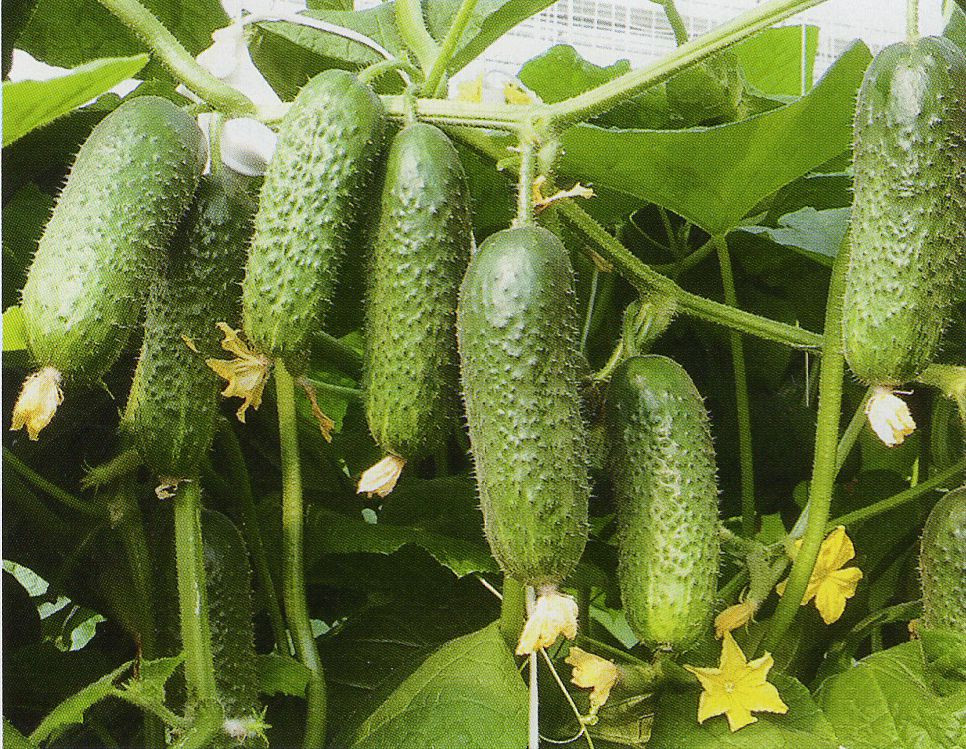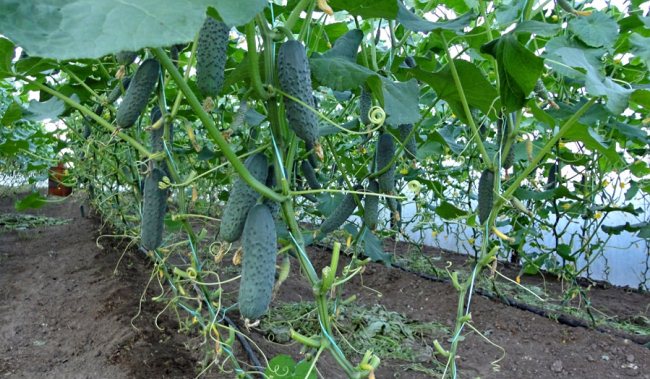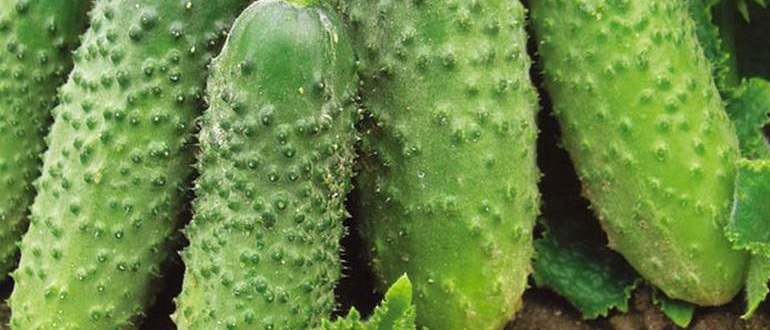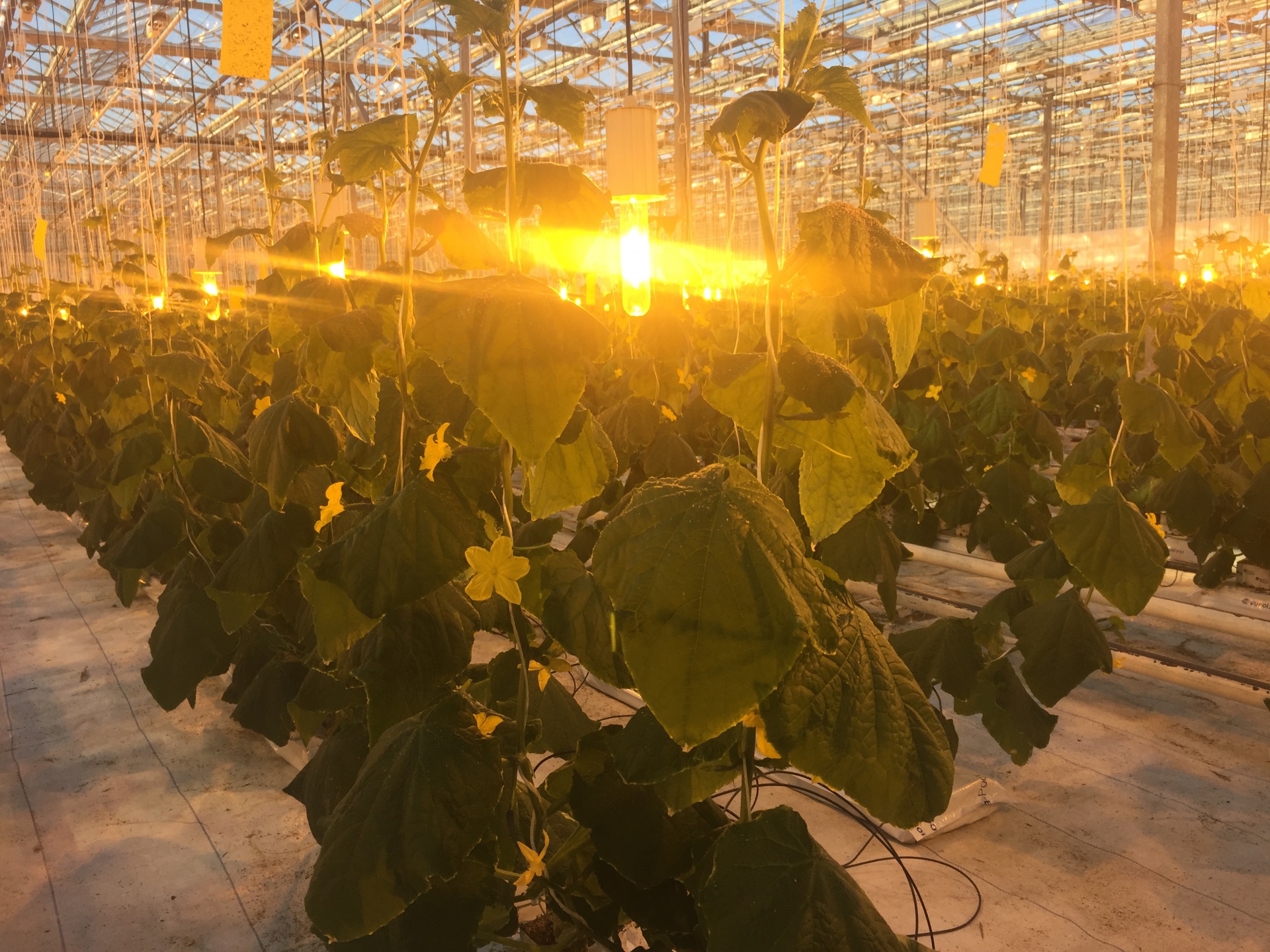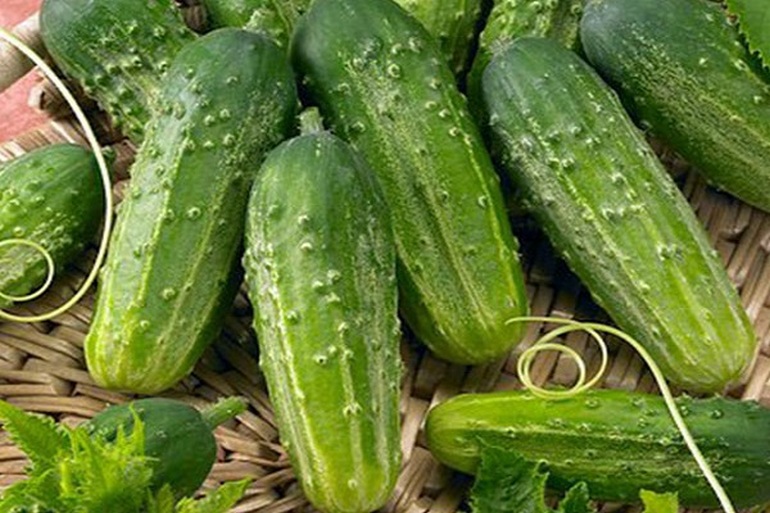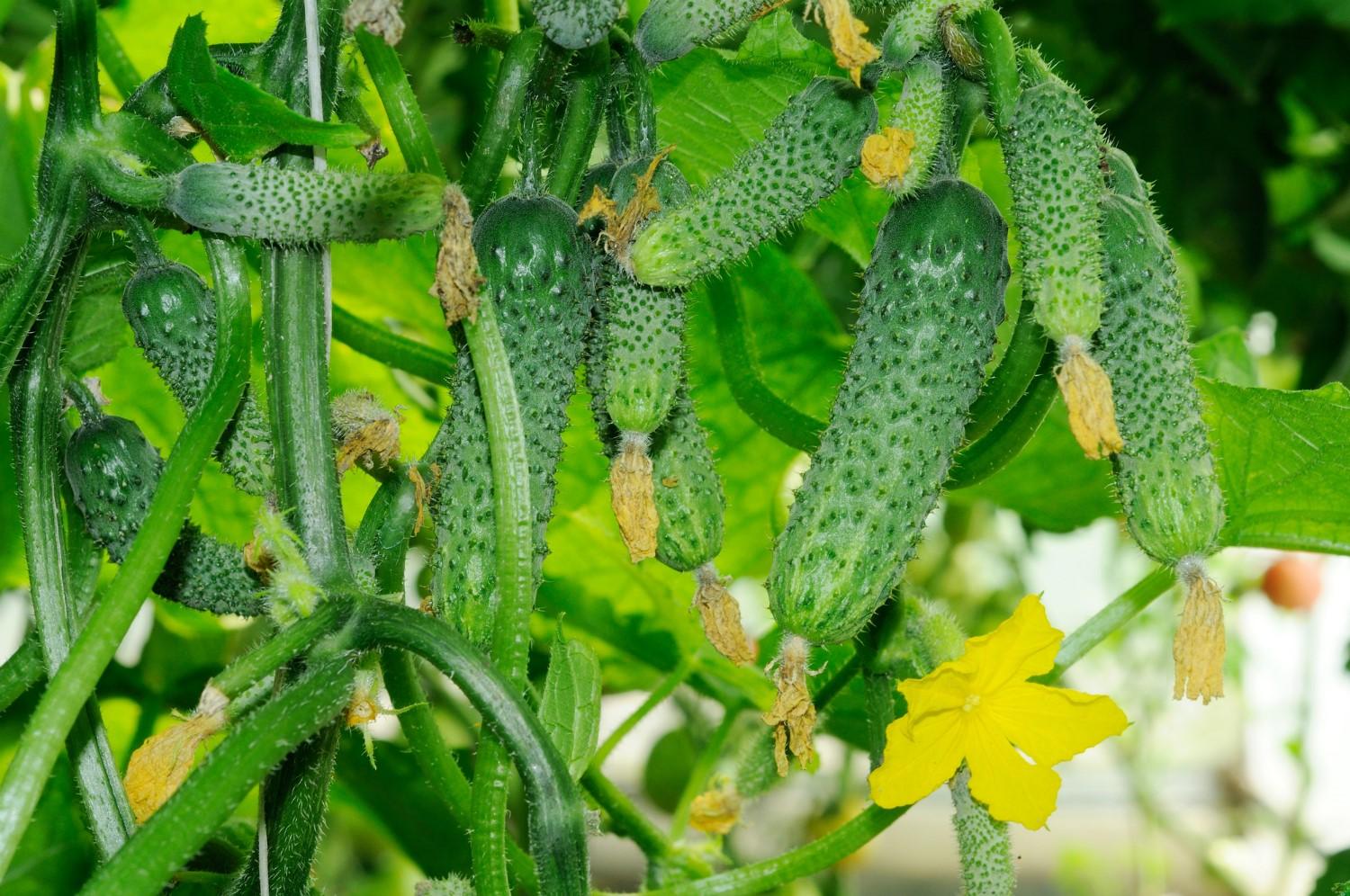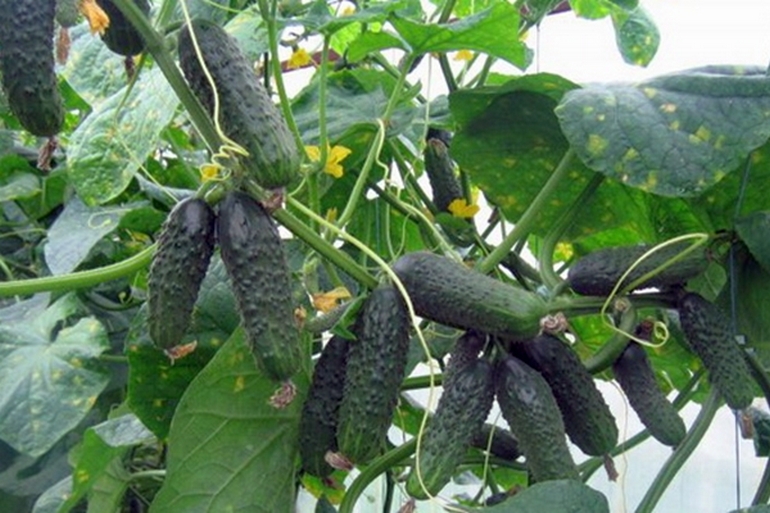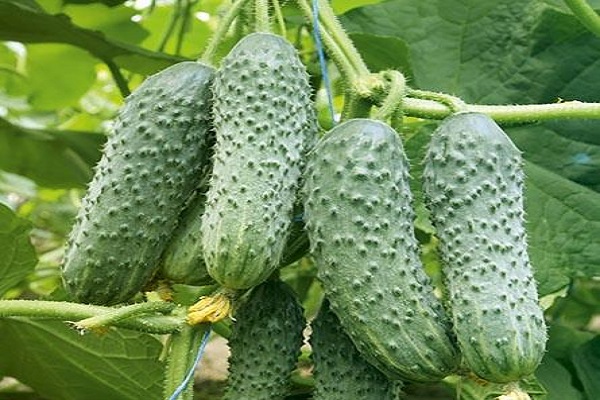Content:
Cucumber variety Kibriya F1 was bred for cultivation in greenhouses. The plant meets all the requirements of vegetable growers, having a high yield, juiciness, excellent taste and ability to transport without changing properties. The description of the crop characterizes the cucumber Kibriya F1 as a vegetable crop, which is successfully grown in greenhouses and in an open garden.
Appearance and properties of the hybrid
The Cybria cucumber can produce powerful, compact shrubs with many lateral shoots, with an ovary that looks like a cucumber with a flower (female-type flowering). Bushes with liana-type shoots need a mandatory garter, so it is recommended to place them on a grid or trellis. The foliage is dense, with medium-sized leaves.
Each node of the hybrid vine forms up to three ovaries. Zelentsy are short, oval-shaped. The color of the cucumber is dark green, with barely noticeable short light stripes. Cucumbers of the Kybriya hybrid are dense, very juicy, without a bitter aftertaste. The average weight of each fruit is about 90 g.
Agricultural technology of cultivation
For planting seeds, a variety of containers or special cells are used, which excludes damage to the roots when planting in the ground. The sequence of planting a vegetable crop is as follows:
- soil preparation for planting containers. For planting this variety of vegetable crops, the following compositions of the soil mixture are used: peat + humus + rotted sawdust, the ratio of which is 2: 2: 1. Sod + leaf soil + compost + vermiculite in a ratio of 3: 3: 3: 1. It is necessary to add a nutrient mixture of the following composition for every 10 liters of prepared soil: wood ash - 100 g, urea, superphosphate and potassium sulfate - 1 tsp each;
- an important characteristic of the finished substrate is a neutral reaction (pH 6). If necessary, liming the existing mixture to the required pH value should be carried out.
- planting is carried out in loose, moist soil. Until the first true leaf appears in the room, the humidity should be kept at least 90%, the optimum temperature should be about 230C;
- grown seedlings should be fed with complex fertilizer before transplanting to a prepared permanent place;
- the recommended planting density of seedlings is no more than three bushes per 1 sq. meter;
- the optimal temperature in the greenhouse, providing intensive growth of bushes - within 22-26 ° С;
- the most acceptable method of irrigation is drip, manual method of irrigating bushes is allowed;
- in a greenhouse, cucumber bushes should be watered daily until buds form. The irrigation rate averages about 7 liters per 1 sq. m;
- the cucumber bush is tied up as it grows, fixing it on a net or trellis;
- planting should be provided with regular fertilizing with organic and mineral fertilizers. A good fertilizer is a solution prepared from a well-rotted mullein;
- when one real leaf appears, the seedlings can be prepared for transplanting to the garden. Nutrient components must be added to each bush at least twice. With the appearance of the fifth leaf, the plants are transplanted into the ground.
Caring for young seedlings consists in timely watering, dressing, garter of an indeterminate plant.
Gherkins should have an optimal size, no more than 10 cm. Fruits are quite layable, do not change taste, do not lose juiciness, and are well transported over long distances. For storing cucumbers, you need to use cool rooms with good ventilation.
Advantages of the Kibria F1 hybrid
Cucumber has a lot of advantages:
- taste, unchanged during long-term storage;
- versatility in cultivation (in a greenhouse and open field);
- good qualities of a canned product;
- the resistance of the bushes to most diseases;
- high performance.
The disadvantages include susceptibility to gray rot disease. For planting, regular vitamin and mineral supplements are required. Heat and drought are dangerous for them.
Grown in accordance with all the rules of agricultural technology, a varietal early-ripening self-pollinating cucumber hybrid has a high yield: within 17 to 19 kg per square meter.
